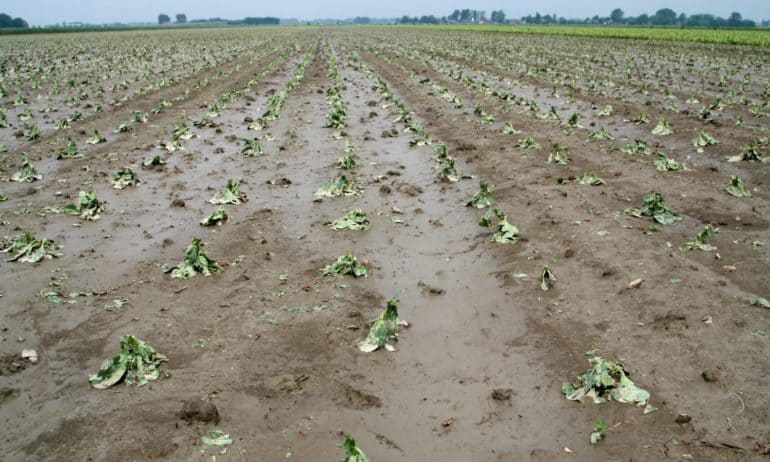In the wake of the damage caused by Hurricane Maria, Puerto Rico’s food supply and agricultural industry are in a state of crisis. Maria has stripped Puerto Rico of most of its farmland—approximately 13,000 farms—which accounts for roughly a quarter of the island’s total land. Since the hurricane made landfall two weeks ago, water, food, and fuel supplies are running low, power and communication lines are still largely down, and much of the infrastructure is destroyed, leaving people vulnerable and without shelter.
With Category 4 winds up to 155 miles per hour (250 kilometers per hour), Maria wiped out approximately 80 percent of the Puerto Rico’s total crop value, Puerto Rico’s agriculture secretary Carlos Flores Ortega told The New York Times. That equates to about US$780 million in crop losses. While plantain, banana, and coffee crops were hit the hardest, local staple crops such as sugarcane, tobacco, and citrus fruits have also been largely destroyed. Landslides and flooding have killed farm animals and destroyed dairy barns and industrial chicken coops. While Puerto Rico imports about 85 percent of its food, extensive storm damage to roads, ports, and stores is making food distribution difficult.
“Due to the widespread damage and power outages, the island has little or no food that can be bought in stores, and we at USDA (U.S. Department of Agriculture) are working hard with the territorial leaders to make sure households get the food they need,” said U.S. Agriculture Secretary Sonny Perdue in a press release.
The U.S. Federal Emergency Management Agency, working in coordination with federal partners, has provided more than 4 million meals, 6 million liters of water, and other essential items to the U.S. Virgin Islands and Puerto Rico since Hurricane Maria’s landfall. Additional meals and water continue to arrive at the islands daily via both air and sea.
The agricultural industries of other Caribbean countries have also been affected by Hurricane Maria in addition to Hurricane Irma, which made landfall in early September. In Dominica, the U.N. Office for the Coordination of Humanitarian Affairs has determined that 100 percent of crops have been destroyed, with farm infrastructure and agricultural tools suffering severe damage. In Haiti, farms in coastal areas were flooded, and the subsistence food crops of roughly 18,000 family farms have been destroyed. There is an urgent need for food and water, with some countries likely to experience an unprecedented level of food insecurity.
With most radio stations and cell phone towers still inoperable in Puerto Rico, government officials have no way to accurately assess the extent of the damage. Perdue has pledged all resources at the USDA’s disposal to help agricultural producers in Puerto Rico and the U.S. Virgin Islands as they recover. According to Perdue, the USDA “is ready to assess agricultural damage and assist producers when conditions on the islands allow.”
In the meantime, a number of relief efforts are providing aid to victims all over the country. The Puerto Rico Real-Time Recovery Fund, managed by nonprofit organizations ConPRmetidos and Foundation for Puerto Rico, is directing 100 percent of donations to long-term structural repairs to the most vulnerable communities. #ChefsforPuertoRico, run by celebrity chef Jose Andrés in conjunction with local Puerto Rican chefs, is providing meals and relief to thousands of Puerto Ricans per day. First Lady of Puerto Rico Beatriz Rosselló has created a presentation on the emergency as well as a relief fund United for Puerto Rico, which will provide aid and support to those affected by hurricanes Irma and Maria. It is urging people all over the world to take part in campaign awareness by using social media.
Providing an update on the situation, Puerto Rican Governor Ricardo Rosselló has stated in the media, “We’re managing, it is uncomfortable, but things can either get better, or they can get worse. Our petition is: let’s get some more resources here, let’s help the people of Puerto Rico.”










